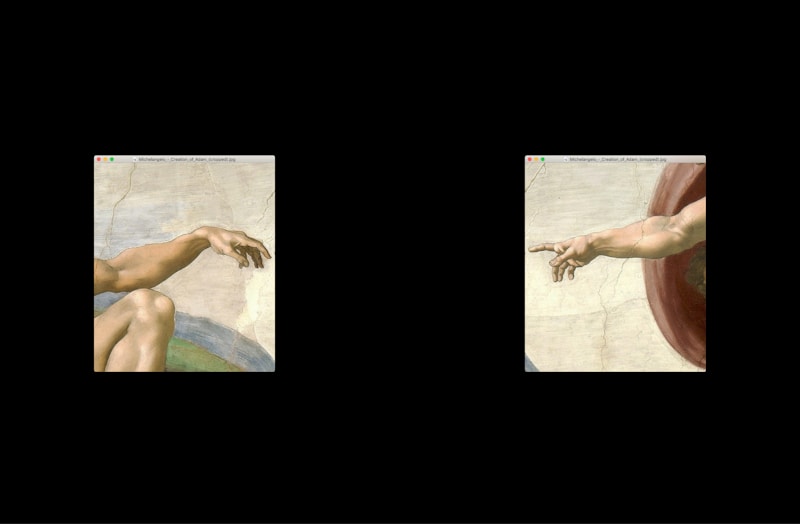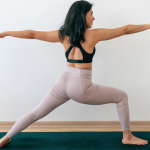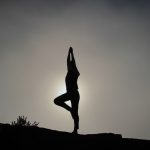Adam Husler is a Vinyassa and Budokon yoga teacher based in central London. You can find him teaching regularly at Yogahaven, Equinox, Yotopia, Tripspace and Stretch. With experience getting punched in the boxing ring, sweating on the ultra marathon road, channeling his inner Chuck Norris in dojos and getting lost trekking the world, his classes are always strong, creatively sequenced, with intelligent alignment and questionable humour.
Upon deciding to write a series of articles on the theme, ‘Me before Yoga,’ it seemed only too fitting that I interview Adam. Roughly one year ago I was coming to the end of my summer away from university, I should’ve been having the time of my life however I was battling anxiety, a relapse of an eating disorder and was utterly lost. I walked into a yoga class in Islington, having not practiced for weeks. Adam was the teacher that day and the class that followed broke me down mentally, physically and emotionally.
Admittedly, it could have been any teacher, in any studio in any city, but after that class I spoke to Adam about how he came to teach yoga, and by the time I walked out the door I had made the decision to leave university and follow the road to becoming a yoga teacher. One year on I can safely say that in that 75 minutes, my life switched directions and I came to the best decision I’ve ever made. I caught up with the man himself on what yoga did for him and what it is to be one of London’s most in demand teachers…
YogaLondon: Has your yoga practice changed you as a person? If so, how?
Adam Husler: I’ve always been interested in trying to live ‘a good life’ and it all started with some of the ancient philosophies: stoicism in particular. Though the right intentions were there, studying law, boxing, lifting heavy stuff and a touch of university hedonism slightly got in the way. Through the physical practice of yoga I slowly began to train my mind and body to let go of old patterns of behaviour and develop some new patterns, ultimately leading to a happier, more relaxed, content and bendy me.
YL: Do you remember what you thought going into your first yoga class? Was it entirely new to you or something you’d grown up around?
AH: Yoga wasn’t a huge deal in the land of Brummys in the 80s and 90s. My rationale for going to my first serious public class was that I simply wanted to loosen up my boxing body and spend some time exercising without being punched. I spent my first year or so trying to win at yoga. I didn’t. It turns out you can’t.
YL: Do you have a favourite āsana or perhaps favoured style of yoga?
AH: My general teaching style and what my body agrees with is a slow, controlled, alignment focused vinyāsa style of yoga with long strengthening holds and some creative sequencing. Personally, I don’t like fast-paced classes as I feel it’s harder to get deep into the physical experience. Equally you don’t build as much strength and you lose a lot of the benefits of a long, steady, slow ujjāyī breath and the effect it has on your neurological system. If I really want a cardio fix I’d run to a yoga class than look for it within the practice.
YL: What’s the best thing about teaching in London?
AH: Simply how popular yoga is and how open the general population are to trying it. There are thousands of yogis in London, plenty of variety in teaching styles and studios and of course, in a busy place like the Big L, it’s a little bit more viable to make yoga teaching a main or only income source.
YL: What would you tell a yogi thinking about taking the plunge into teacher training?
AH: First of all, establish why you are doing it. Is it to develop your practice? For a full career change? Or as a nice way to make money on the side?
You need to make sure that you’ve had good few years experiencing the affects of a steady yoga practice on your body: you might be able to do the splits, but that means you are flexible, not that you have an informed, long term yoga practice.
Teaching yoga full time is a hard job; generally you work long unsocial hours, essentially managing every element of a small business from marketing to delivery, all in a very commercially competitive environment. Having said that, I love every second of it.
YL: Are there parts of your practice you still find a challenge, physical or mental? If so what are these and why do you think that is?
AH: Yoga should always be a challenge. It is a constant attempt at self-enquiry and self-realisation. Whether it’s holding handstand for five minutes, sitting still without scratching your nose or accepting that your hips aren’t quite a loose as you would like them to be, it’s about accepting these difficulties. What is ‘hard’ is entirely subjective, it’s your job as a yogi to make sure you are always seeking that challenge and making the commitment to self-transformation, in each and every moment.
YL: What do you think is the secret of yoga which everyone, practising or non-practising should know?
AH: Yoga can be practised not just in the hour you spend on your yoga mat each day. Yes, you can sweat and of course you’ll develop some flexibility, strength and the ability to get in to some cool looking postures but all of this is just vehicle or tool to help us pause that internal narrative. For many, the hours spent practicing yoga are just an initial attempt at pausing that dialogue and this can be practiced off the mat as well as on.
YL: You’re one of the founding members of a group called Boys of Yoga. Can you tell us a little bit about how Boys of Yoga came to be?
AH: That’s a project that has been in Michael James Wong’s head for a long time. Last year, he shared his plan with some male teachers across the world and then it all began! Have a peek at the website for more about the project here!
YL: What gets you up in the morning?
AH: My alarm, saying I have 30 minutes to put on some clothes and cycle across London for my 6.30am class!
YL: Describe your journey into yoga – from the first class to the present moment in three words.
AH: Unexpected. Educational. Transformative.
Big thanks to Adam for taking the time to chat with the YogaLondon Blog! To learn more about him and Boys of Yoga, you can take a look at his website, or you can follow his yogic adventures on Instagram, Facebook and Twitter!













